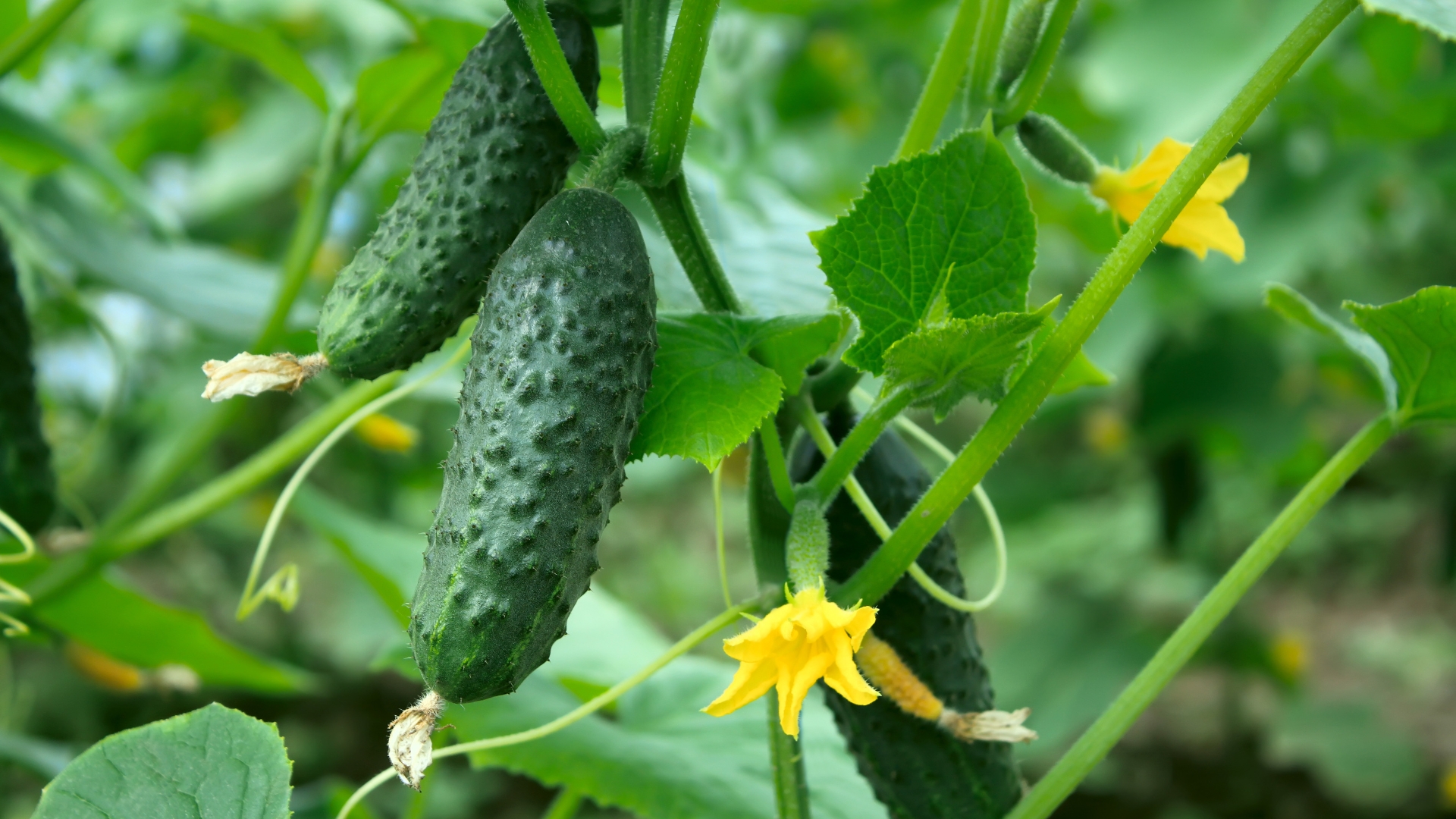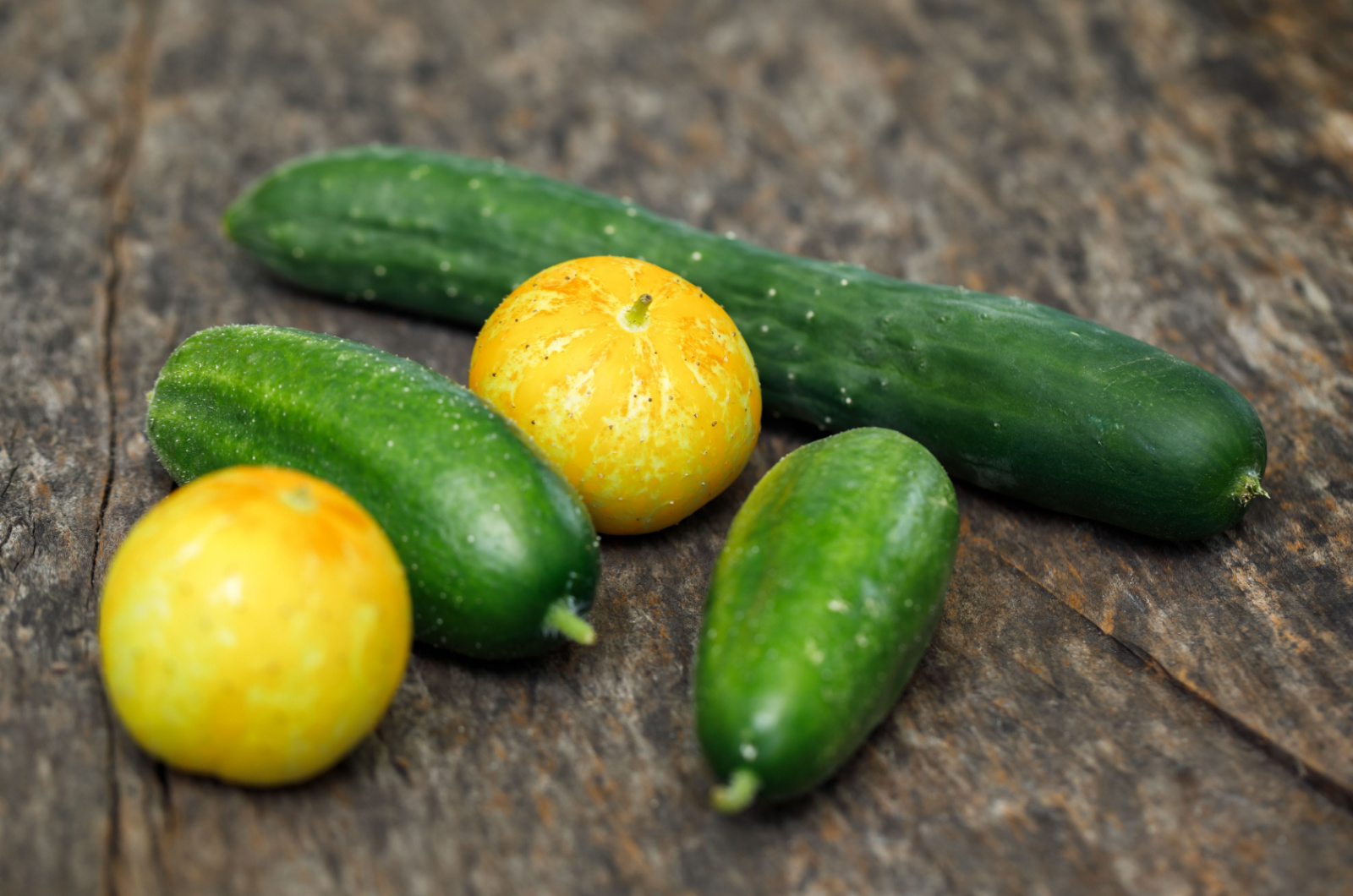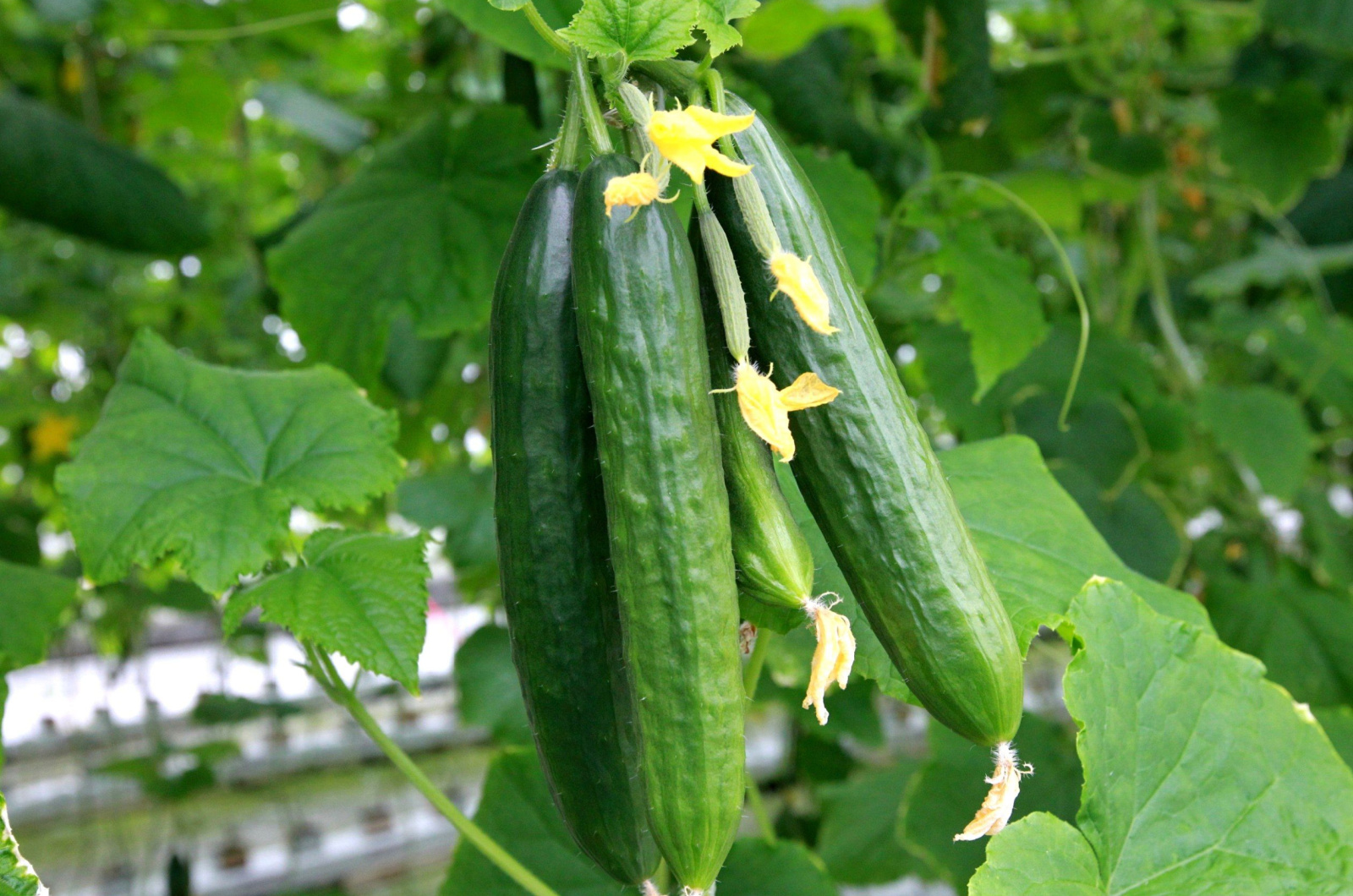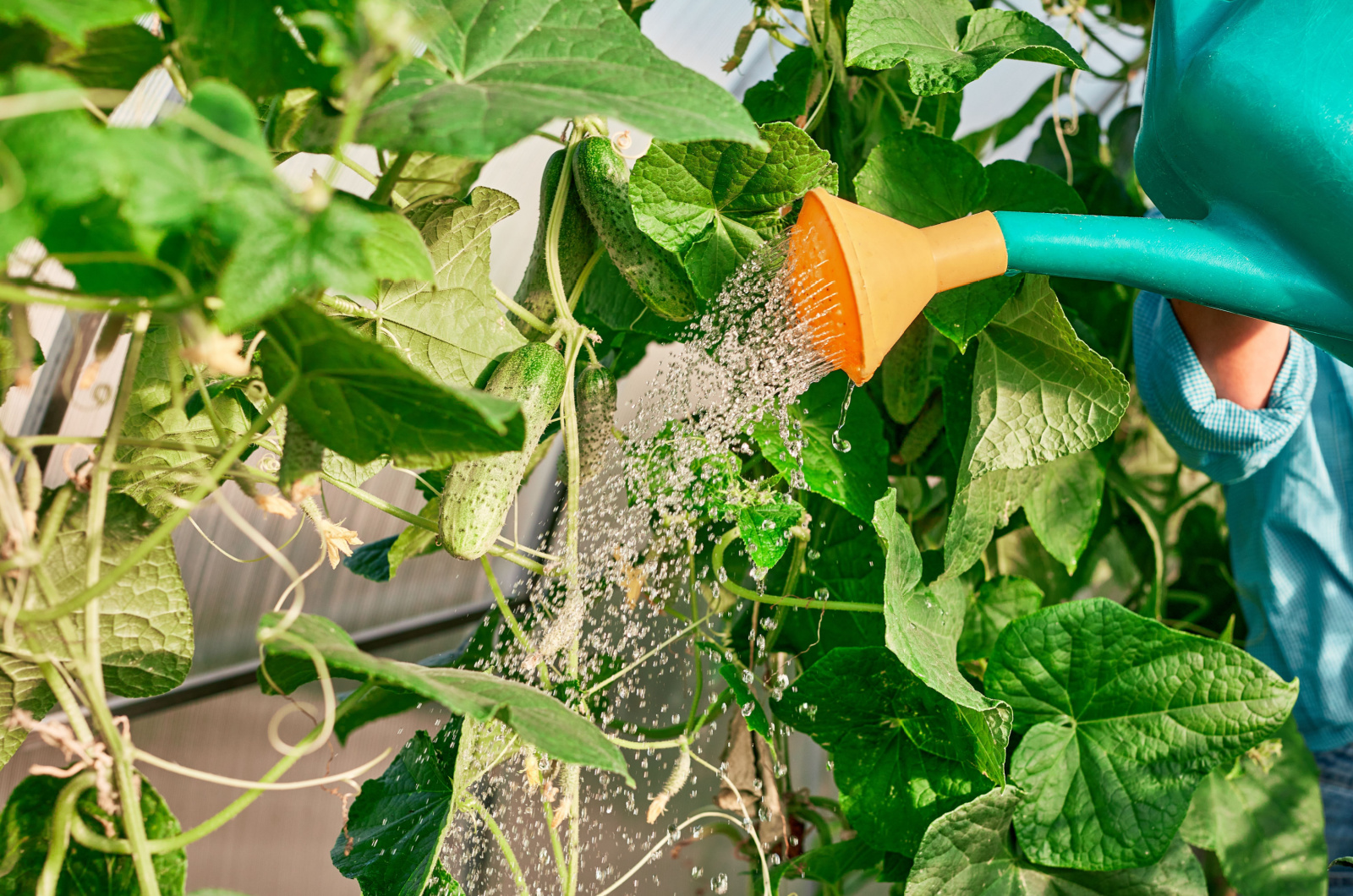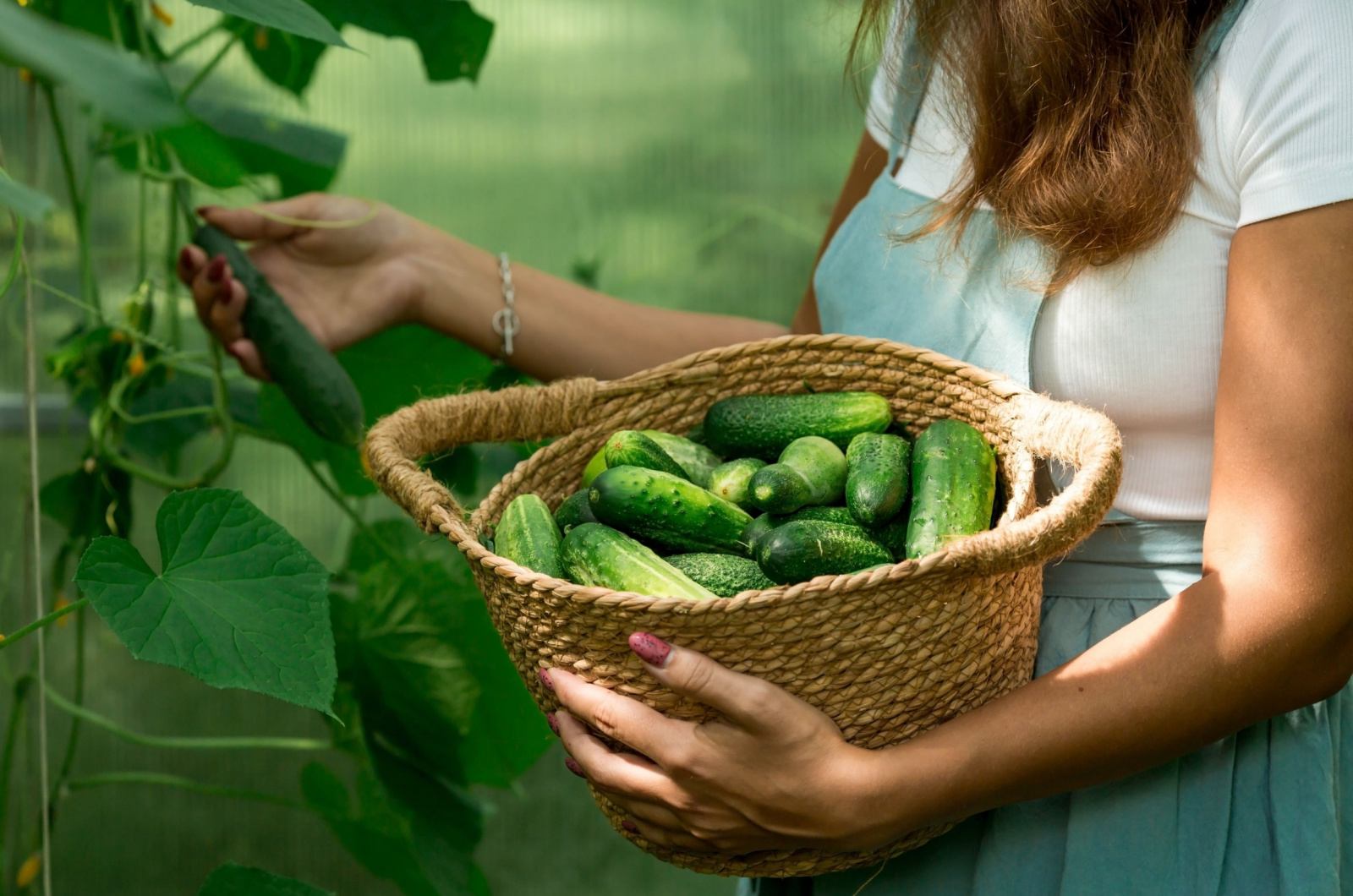Cucumbers are perfect veggies to add to your garden. They’re relatively easy to maintain and produce delicious fruit that you can either consume raw or store to enjoy their fantastic taste for months.
One question I often get regarding the cultivation of these veggies is: How many cucumbers per plant? I must say I wondered the same when I started growing veggies in my garden. What I learned over the years is that the size of the harvest actually depends on many factors.
In the following paragraphs, I’ll explain to you in detail what these factors are and also how to get an abundance of cukes at the end of the season!
Let’s get started!
Types Of Cucumbers
When buying cucumbers in supermarkets or choosing the seeds to sow in your garden, you’ll notice that not all cukes look the same. Some are larger, some are more round, and some may even differ in color.
Monoecious Types
The vines of the standard species have male and female flowers, which are classified as monoecious plants in botany.
Since these cuke types contain both flowers, pollen must transfer from the male flower to the female flower for the fruits to form.
It may be difficult to know which are male and which are female flowers. Well, the male ones will have a straight stem placed under the petals, whereas female ones will have a small fruit attached.
You should know that these types produce more male flowers to provide a good amount of pollen for the female blossoms to open. Cucumber pollination is successful once the small fruits start to develop.
Gynoecious Types
Other types of cuke you may encounter are gynoecious or parthenocarpic. I have to mention that these are hybrid varieties so pay attention to the label when purchasing the seeds.
Some gynoecious cukes produce mainly female blossoms so you’ll need to either assist pollination or purchase seed packets with a few seeds of monoecious types.
You can also search for gynoecious types that don’t require pollination at all and will yield a lot of fruit.
Parthenocarpic Types
Finally, if you have a greenhouse or polytunnels and there aren’t any bees, you should go with parthenocarpic varieties. Again, pollination isn’t required and these cukes won’t produce any seeds. The most popular variety that doesn’t need to be pollinated is Diva.
However, if there are some monoecious types in your garden, it’s possible that bees will cross-pollinate so that parthenocarpic types produce seeds.
Other Cucumber Classification
You won’t only find the above mentioned types on the label of cucumber seed packets, but also classification based on the type of fruit.
This is actually more important to those who want to know how many cukes per plant to expect.
Some cukes are round, some are pickling, slicing, cocktail, thin-skinned, or specialty. Sometimes, you may find even further division; for instance, thin-skinned may also be classified as Asian, English, or Beit Alpha.
I’m one of those gardeners who grow more varieties so that I can have a long cuke harvest season.
How Many Cucumbers You Can Expect Per Plant
Generally speaking, you can expect approximately 10 pounds of cucumbers per 10 feet row.
The exact number actually depends on the type of cucumber, so let’s cover it in detail!
Slicing Varieties
Each vine of a slicing cuke variety can produce approximately 8-10 fruits. However, you can expect this number only if your cucumbers are completely healthy.
These types are my favorite for sandwiches and salads. You can pick them when they’re about 7-8 inches long.
Their main feature is a thick skin. If we compare them to English cukes, they can last longer when properly stored.
You’ll get an abundance of fruits if you decide on Diva, Lisboa, or Marketmore 76 varieties.
Pickling Varieties
I highly recommend considering these 3 factors when choosing the pickling cuke varieties. First, go with ones that produce high yields. Second, make sure they have excellent resistance to diseases. And third, choose ones that mature earlier in the season.
You can expect anywhere between 10 and 15 fruits from each heirloom or hybrid variety.
Bush Pickle, Pick-a-bushel, and Salt And Pepper are high-yielding pickling cucumber varieties.
Asian Varieties
Unlike slicing cukes, Asian varieties feature thinner skin, and best of all, you don’t need to peel them before consuming them.
These varieties are also an excellent choice for gardeners who cultivate plants in raised beds or polytunnels.
7 to 9 fruits is the average yield of healthy Asian varieties, and the same goes for English varieties.
Sashimi, Suyo Long, and Tasty Green are my top picks.
Heirloom Varieties
Many gardeners avoid growing heirloom cukes since their disease resistance is lower than other varieties.
However, these cucumbers may produce a large number of fruits, up to 15. There’s one hack regarding heirloom varieties; pick them when they’re bright green. Harvesting at this cucumber growth stage will ensure high-quality, delicious fruits.
Another benefit of harvesting heirloom cukes before maturation is that it’ll encourage the production of more blossoms, which will result in a better yield.
What Decreases Cucumber Yield
The number of fruits discussed above is only related to healthy cukes. These plants may face a few issues during growth, and these are the most common.
Diseases
When growing cukes, you should watch out for Bacterial wilt (1), which can quickly spread by cucumber beetles. If you live in warmer climates, you should be careful with Fusarium wilt. (2)
The most common disease in these vegetables is powdery mildew (3), which occurs due to too much moisture and results in white spots on the cucumber leaves.
Disease prevention in cukes includes choosing resistant varieties and employing crop rotation techniques.
Pests
These annoying creatures will attack your cucumbers if they visit your garden. The most common ones are cucumber beetles; the two main types include striped beetles and spotted cucumber beetles.
These pests cause holes in the foliage and blossoms and may damage the roots. Infestation may result in fewer to no fruit, which is why it’s essential to monitor your cucumbers.
Prevent pests by using the crop rotation method and putting row covers on freshly-planted beds. Make sure to uncover your cukes when the first blossoms appear to allow pollination.
Lack Of Pollination
As we mentioned, some cuke types must be pollinated to produce fruit. Therefore, if there aren’t enough pollinators in your garden, you’ll end up with a poor yield.
The best idea would be to plant flowering plants that attract bees and other pollinators, such as lavender, salvia, and zinnia.
Tips For Growing Cucumbers
Growing cucumbers isn’t hard but you must meet their basic requirements to get a high yield. Here are some tried-and-true tips for healthy and happy cukes.
Water frequently
The watering requirements of cucumbers are pretty high so don’t spare water, especially during hot summer days. Your cukes will quickly start wilting if they lack water. Add water approximately two times a week to prevent dehydration.
Putting a layer of straw over the soil surface will help the soil retain well-needed moisture. If you grow your cucumbers in containers, I advise watering them on a daily basis because they lose moisture faster.
Ensure Structural Support
I highly recommend attaching your cucumbers to a trellis or other type of support to encourage vertical growth. This way, all plant parts will have enough light to develop healthily.
Another benefit of this method is that it promotes air circulation between plants, which prevents diseases. Additionally, you’ll be able to pick fruits easier and won’t need to look for them among densely packed leaves.
Pinch Off The First Blossoms
Interestingly, pinching off the first blossoms may give you more fruits per plant. Removing the female flowers first will send a signal to the plant to display new growth.
If your cukes enter their blooming stage too early, the fruits will be smaller. Simply take your garden snips and remove the first two female blossoms.
Fertilize
Cukes are heavy feeders and you’ll need to ensure a lot of nutrients for healthy growth.
You can work in well-rotted manure and add a complete, well-balanced fertilizer before planting your cucumbers. Fertilizers with larger concentrations of potassium and phosphorus work best for these types of veggies.
Applying Epsom salt to your cucumbers may also encourage healthier growth and higher yield.
Tips For Harvesting Cucumbers
I guess the best part of cucumber cultivation is harvest. The time and harvesting method mainly depends on the number of fruits.
Don’t wait for your cukes to fully mature; this will allow further flower production and consequently more fruits.
If you harvest fully ripe cucumbers, the plant won’t generate new blossoms, which means fewer fruits.
I always use garden snips when harvesting my cukes because that way I avoid breaking the stem, which can damage the fruit.
You can use different techniques to keep your cucumbers fresh after harvesting. A metal spoon and paper bag are one of the ways that will help you extend the freshness of your delicious, homegrown cukes.
Happy growing and harvesting!
References
1. Bacterial wilt of cucurbits. (n.d.). UMN Extension. https://extension.umn.edu/disease-management/bacterial-wilt
2. Fusarium wilt. (n.d.). UMN Extension. https://extension.umn.edu/disease-management/fusarium-wilt
3. Colorado State University Extension. (2016, February 22). Powdery Mildews – 2.902 – extension. Extension. https://extension.colostate.edu/topic-areas/yard-garden/powdery-mildews-2-902/

